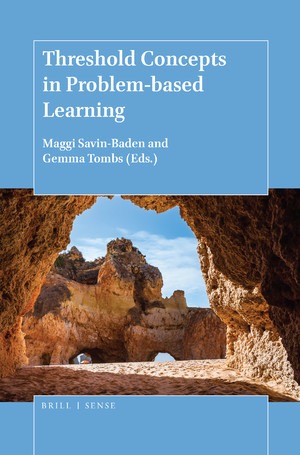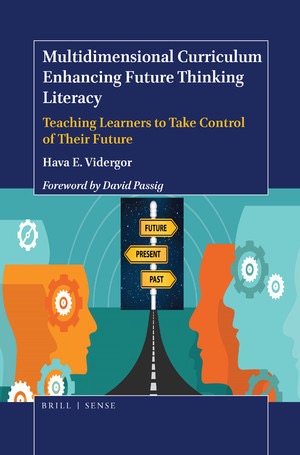problem-based learning
Select an item by clicking its checkbox
Education prepares learners for a world that educators cannot possibly anticipate. This has been true for longer than most educators would like to admit but it is even more the case today. Learners are viscerally aware that they inhabit a rapidly shifting landscape that calls the relevance of our courses ...
Date Reviewed: April 15, 2020
The editors of this volume address a gap in scholarship by bringing Problem-based Learning (PBL) into fruitful dialogue with the separately developed Threshold Concepts Framework (TCF). The goal of the volume is to show how TCF enhances the understanding and practice of PBL. None of the authors addresses the teaching of theology or religion; nonetheless, each chapter offers some insight that could readily lend itself to a better understanding of the process of learning in the theology or religious studies classroom. The collection begins with four strong introductory chapters addressing the basics of these two pedagogical approaches and their relationship to each other. The next three chapters lay out how these theories can be found across such different disciplines as engineering education, chemical engineering design, and professional development for university teachers. The final three chapters report on research projects that point out new TCs in additional disciplines.
PBL is an educational practice that presents students with real world problems that are not neatly defined and do not have an obvious solution. Students work in groups to decide what further knowledge they need, how to obtain it, and how to represent it. The TCF works with the points at which students cross in a significant way from familiar ways of framing knowledge to a point of disorientation and then to incorporating new knowledge. Savin-Baden and Tombs describe TCs and PBL as independently developed pedagogies but natural partners nonetheless. This is true in two ways. PBL has long described itself as deliberately constructing a path for students toward and through “troublesome” knowledge. Suitable problems for PBL are those that lead students to a point of being stymied in their existing level of knowledge as they address wicked problems that are not easily classified and solved. Often the PBL method is itself troublesome to students as they wrestle with an educational process that shifts responsibility from teacher to student and from individual to group.
Operating separately, TCs identify and work with concepts either particular to a discipline or more generally, that require a student to leave the space of prior knowledge and self-understanding and enter into a liminal state in which prior knowledge is no longer viable but new concepts or self-understandings are not yet grasped or stabilized. TCs give attention to the type and amount of scaffolding that is necessary to prepare students and help to direct them through these impasses. Although the TCF was originally developed through consideration of threshold concepts in particular disciplines, the editors go beyond those boundaries to consider transdisciplinary concepts including critical thinking.
Even though the chapters devoted to particular disciplines are not all obviously applicable to teaching theology and religion, their authors succeed in making the target ideas more understandable. The chapter most valuable for teachers of theology and religion is the contribution of Jayne Lewis, “Empathy and Problem-based Learning.”
People unfamiliar with these two areas will find enough guidance to read the discussion fruitfully; that being said, this collection is not an entry-level introduction but an opportunity for deeper development for those already familiar with one or both of these approaches. There are more proofreading issues in this book than one would expect. Skipped words and puzzling phrases slow readers down while they grapple with making sense of the text.
Date Reviewed: June 16, 2021
It combines latest teaching strategies of transdisciplinarity, phenomenon-based, project based, and problem-based learning, in a unique manner so as to develop 21st century skills. More specifically, it aims at developing higher order thinking skills and processes referred to as scientific, creative, and future thinking. It covers core and non-core-curriculum domains, multi and transdisciplinary teaching, as well as designing curricula for the gifted, the able and students at risk. It applies the latest theories on constructivism and carefully selected tools authentically and relevantly to create interest and challenge, addressing learning from personal, global, and time perspectives.
Each chapter highlights a strategy or thinking tool, commencing with theory, followed by a unit description and lesson plans. The chapters each end with a final product named the future scenario. This scenario, written by students projecting themselves into the future, is based on accumulated knowledge, summarizes their learning, and illustrates future thinking literacy.
 NOTE: Use the playlist button located in the top left of the video window above to switch between episodes.
NOTE: Use the playlist button located in the top left of the video window above to switch between episodes.
Problem-Based learning at Maastricht University (4:38)
Although a promotional spot for prospective students, this video nicely details goals, roles, stages, and terms common in “problem-based learning.”
Project Based Learning: Explained (3:49)
Through examples, the video promotes this method’s educational value and capacity to develop critical thinking, cooperation, and communication.
Problem-Based Learning at SIU PA Program (11:25)
Goals, roles, and stages (including self-assessment) of problem-based learning demonstrated through a case study approach to physician assistant training. Video emphasizes the active learning dimension of problem-based learning.

Open Space Learning: A Study in Transdisciplinary Pedagogy
Date Reviewed: November 30, -0001
Open-Space Learning (OSL), a “transdisciplinary pedagogy” as practiced at the University of Warwick, challenges assumptions about the boundaries of disciplinary knowledge, the organization of teaching spaces and resources, and the power arrangements that order the roles of teachers and students. This book bears witness to the efficacy of learning in spaces that assume students are engaged in embodied risk-taking, problem-based play, personal responsibility, group collaboration, and open-ended exploration within boundaries and expectations that yield demonstrated competence. The essential prefix for this learning space is “trans-”; it is asserted to be transgressive, transcendent, transitional, trans-rational, transactional, transdisciplinary, and transcultural. OSL draws from the learning theories of Boal, Freire, Vygotsky, Gardner, and Kolb and from the work of Clark and Damasio in neuroscience.
In 2005 the University of Warwick received a grant from the Higher Education Funding Counsel of England to create its center for Creativity and Performance in Teaching and Learning (CAPITAL) in partnership with the Royal Shakespeare Company. Principles of theater pedagogy and performance studies opened new learning possibilities for disciplines not normally associated with embodied performance. The OSL website at the university notes collaborations between CAPITAL and students in business, chemistry, cultural studies, theater studies, philosophy, math, and psychiatry programs. The authors indicate that hundreds of students have been exposed to their learning pedagogies between 2007 and 2011.
Four case studies create the backbone for the book. (1) An undergraduate module “without chairs” for literature majors brought twelve of Shakespeare’s plays to life and assessed student learning in comparison with students in the “with chairs” version of the module. (2) Law students argued cases found in four plays and analyzed their legal implications. (3) The learning gained by participants in the Certificate in Teaching Shakespeare program and the Postgraduate Award in Teaching Shakespeare for Actors is assessed using several measures. (4) Three “practice as research” projects focused on theatrical productions, practical workshops, and performance process for undergraduate students or post-graduates who were teaching Shakespeare. These studies provide descriptions and interpretations of the projects, but they do not offer much detail about the pedagogy’s methods for those without a theater background.
The book publisher provides videos and outlines for specific OSL activities on its website. (I was not successful in getting a number of the links to work.) The OSL site at the University of Warwick provides similar links as well as some others. (This website has not been updated since fall 2013, which also raises questions about the current state of OSL at Warwick.) This book was published as a paperback in 2015. Open Space Learning reads like a report for university or funding organization officials. The authors give significant attention to student assessment of their learning and their performance on various required assignments.
Classroom lectures and seminars, characterized negatively as contexts of “knowledge download,” were the dominant forms of teaching when CAPITAL began. OSL intentionally changes, at least in theory, the relationship between teachers and students, “dethroning” or “uncrowning” the power of the teacher that is reinforced by physical classroom spaces and presentation formats.
I am not satisfied that the authors grappled with the power dynamics that remain present in OSL environments. While a teacher’s authority and expertise are expressed differently in the OSL context, teachers are still structuring the environment in which learning occurs. They are evaluating student work. They determine who passes or fails the modules. While teachers may have been “dethroned” from the traditionally hierarchical ways of exercising authority, they still have power, and perhaps disguised power, in the exploratory OSL context.
The expressions of open space learning reported in this book depend heavily on the plays of Shakespeare. These applications of OSL for religious or theological educators are not immediately obvious, but imaginative teachers, especially those with a performing arts background, will draw inspiration from Open Space Learning and develop possibilities for performing the narrative-based texts from their disciplines in their teaching.


